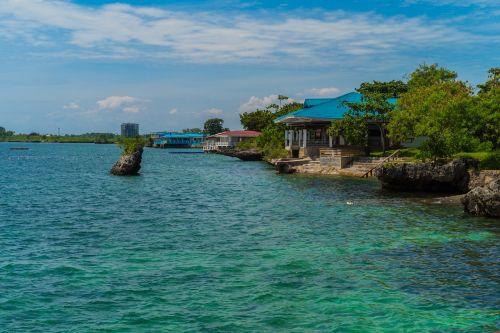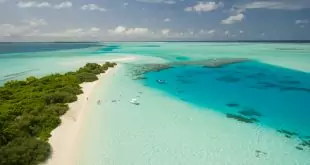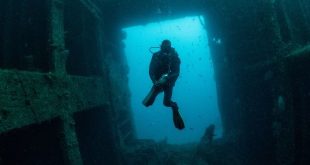Are you planning to travel to the Philippines and do not know where to start? Maybe getting to Puerto Princesa but you don’t know how? In this post we will try to collect the most important things you need to know to plan your trip to the Philippines, a country that today has become one of my favorites throughout Southeast Asia!

We start with travel tips and preparations to the Philippines!
Passport and visa.
No visa is necessary to enter the Philippines as long as your stay does not exceed 30 days. What you do have to have is the passport with at least 6 months of validity.
Vaccines
The first and most important thing is to contact the International Vaccination Center, or to tell the doctor where we are going to travel to inform us of the vaccines we are going to need. It is recommended to get vaccinated a month and a half before traveling. Once there they inform you of the most common diseases that you can find in each country, they give you recommendations for the trip as well as the International Vaccination Card in which all the vaccines that you have been given are reflected.
Medicines
Very important to prepare a first aid kit that we will take to the trip … These are the medicines that we usually take with us and always distributed in the backpacks in such a way that if our luggage is lost we do not run out of medicines.
When to travel to the Philippines?
The Philippines has three stations:
The dry warm season (from March to May, its summer), the rainy season (from June to November) and the dry temperate season (from December to February). When organizing a trip to the Philippines it is important that you take into account the best time to travel to this country, since unlike other countries in Southeast Asia, the torrential rains caused by typhoons or cyclones during the season of rains can annoy your trip and much! It is common during this time of the year to close the ports and cancel all activities in the area, in addition to suffering heavy flooding on the roads. This does not mean that you cannot travel to the Philippines in the rainy season, but you run the risk of having bad luck over time. For this reason, many travelers decide to take the route more or less open to decide on the fly which islands to visit and to change the destination in case of bad weather.
The Philippines is divided into three regions:
Luzon, where the capital, Manila, is located, is the area most exposed to rain during the wet season. During the months of December to February is when the rice terraces look intense green.
The Visayas, which cover the central area of the Philippines, are somewhat less exposed in the rainy season and although typhoons do not pass very close, they can affect the state of the sea and there may be cancellations in the ports for several days in a row. The same does not happen with the Palawan region, which although it belongs to the Western Visayas region, is much more exposed to typhoons and cyclones in the rainy season. Getting to Puerto Princesa is easy. You can book bus or minivan easily.
Mindanao, is the southernmost region of the Philippines and, unlike in the other regions, here the summer months (June, July, August and September) coincide with the dry season, this area being little affected by the rains during this time of the year.
We have visited the country twice, always coinciding with the rainy season and from our experience we recommend choosing better months than those of summer to tour the country.
While in El Nido, a typhoon caught us closely and was raining three days in a row, closed the port and we could not do anything, dive or do any island hopping since the port was closed and no ship was allowed to leave.
How to get to the Philippines?
The best way to get to the Philippines is to buy a flight from main airports to Manila, the capital. Another cheaper option is to look for a flight that goes to any other city in Southeast Asia such as Hong Kong, Kuala Lumpur, Singapore … and from there fly with other low-cost companies to the Philippines (Manila, Cebu or any other city in the country ). There are several low cost companies such as Cebu Pacific or Air Asia that offer much cheaper tickets.
Move around the Philippines
Before designing your trip to the Philippines it is important that you keep in mind that the routes to move around the country are usually quite long and take practically a whole day to get from one island to another. It is best to organize the days of the trip always with a day to get from one area to another in the country. Also keep in mind that the infrastructure there has nothing to do with what we are used to here so don’t despair if you have to wait for several hours to take a ferry or catch a plane.
Here below I detail what are the most common means of transport that you will find throughout the country:
Yipni. It is the official vehicle of the Philippines, both in towns and cities. The first “yipnis” were military jeeps that the US army left after World War II. They have been personalized with Filipino details such as colored lighthouses, religious paintings (let’s not forget that the Philippines is a very Catholic country) and very extravagant drawings.
Tricycles. The tricycle, which you will see in almost all cities and towns, is the Filipino rickshaw, a small roofed sidecar hooked to a motorcycle. In it you can make any short trip as long as you negotiate the price before. Being such a Catholic population, most tricycles are decorated with Bible quotes and religious symbols.
“Habal-habal” also known as “moto-taxi” works just like tricycles but they are somewhat cheaper. They are taxis on motorcycles with longer seats (their name literally translates as “copulating pigs” due to the low level of privacy that exists when the trip is shared with four people). You will see them especially in the Visayas and in the north of Mindanao.
Motorcycles The small islands such as Camiguín, Siargao and Bohol are ideal for motorcycle travel. The feeling of freedom when touring the islands by motorcycle is incredible and we recommend it without a doubt! The average rental price is usually about 7-8 € per day. In most hotels they provide rental bikes but they will be much cheaper if you rent them in the same town. Helmets must be ordered separately since they are not always included.
Ferry. The islands of the Philippines are linked by an incredible ferry network, with fairly affordable prices. Almost all ferry terminals charge a small commission although it is usually a negligible amount.
If you decide to travel by ferry to go from one island to another, it is important to keep in mind that during the rainy season, most companies usually suffer cancellations for several days due to bad weather and this can greatly condition the trip.
There are still a few other things that need to be known before you actually go there but knowing the points above is “your basic capital”.
 World inside pictures Collect and share the best ideas that make our life easier
World inside pictures Collect and share the best ideas that make our life easier








